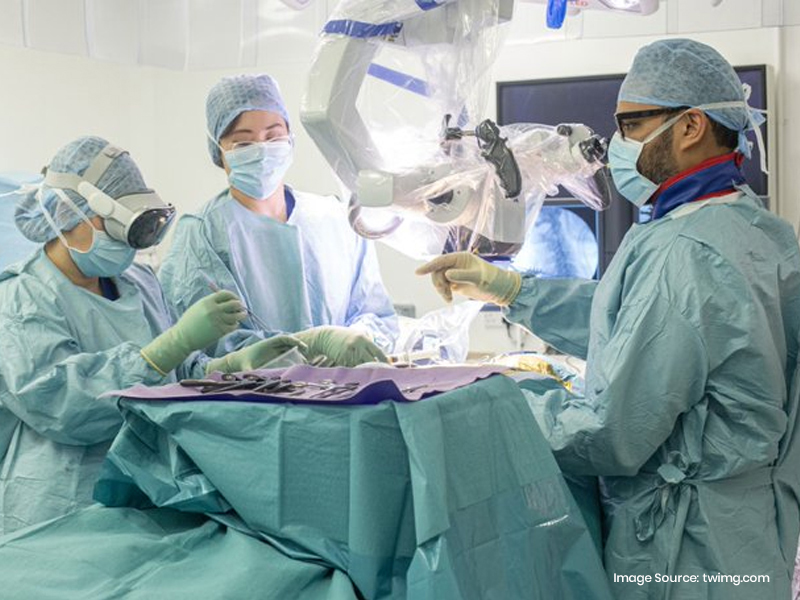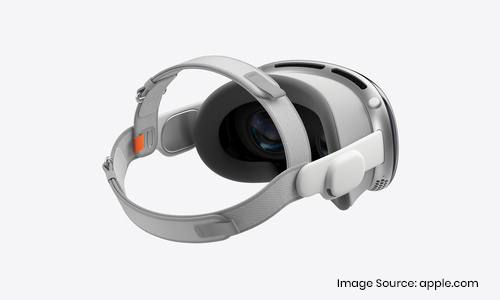Augmented Reality in the OR: Apple Vision Pro Assists Nurses in Spine Surgery

AR and VR
Traditional Roles of Surgical Nurses
Surgical nurses, also known as scrub nurses or operating room nurses, play a critical role in ensuring the smooth operation of surgical procedures. They function as the surgeon’s right hand, providing them with the necessary instruments, sponges, and other supplies throughout the surgery. They also anticipate the surgeon’s needs and ensure the sterility of the surgical field.Apple Vision Pro in Action
Verho used the Vision Pro, integrated with software developed by Exes, a US-based company specializing in AI software for medical applications. The software transformed the headset into a powerful surgical companion, projecting virtual screens in front of Verho’s eyes. These virtual screens displayed crucial information such as:- Surgical checklists
- Real-time data streaming
- Patient information
- 3D models of the surgical site
 With this information at her fingertips, Verho was able to:
With this information at her fingertips, Verho was able to:
Prepare for Surgery
The virtual screens displayed pre-surgical checklists, ensuring all the necessary equipment and supplies were readily available.Track surgery progress
Verho could monitor the surgery’s progress in real-time, allowing her to anticipate the surgeon’s needs and have the required instruments prepared beforehand.Instrument selection
The system displayed 3D models of the surgical site and relevant instruments, guiding Verho in selecting the appropriate tool for the surgeon at the precise moment.Benefits of AR in Surgery
The use of Apple Vision Pro in this surgery highlights the immense potential of augmented reality (AR) in the operating room. AR overlays digital information onto the real world, providing surgeons and nurses with a heads-up display of critical information. Here are some of the potential benefits of AR in surgery:Improved Accuracy and Efficiency
AR can provide surgeons with a constant stream of real-time data, such as vital signs, patient scans, and 3D anatomical overlays. This can lead to greater precision during surgery and improved surgical outcomes.Reduced Errors
By eliminating the need for surgeons to look away from the surgical field to consult physical references, AR can minimize errors and improve surgical safety.Enhanced Communication
AR can facilitate better communication and collaboration between surgeons and surgical staff. Everyone involved in the surgery can see the same information, ensuring everyone is on the same page.Training and Education
AR can be a valuable tool for training surgeons and surgical nurses. Trainees can visualize complex procedures and practice surgical techniques in a safe, simulated environment.The Road Ahead for AR in Surgery
The successful application of Apple Vision Pro in spine surgery represents a significant step forward for AR in medicine. While this is a promising initial development, further research and development are needed to fully explore the potential of AR in various surgical procedures. Here are some areas for future exploration:- Development of AR applications specifically designed for different surgical specialties.
- Integration of AR with surgical robots and other medical devices.
- Studies on the long-term impact of AR on surgical outcomes and cost-effectiveness.
You Might Be Interested In:
- Click, Buy, Pollute? Environmental Impact of Online Shopping and Ways for Sustainable E-commerce
- The High Price of Crypto: Environmental Cost of Mining and Solutions for a Greener Future
- Gemini Evolves: Your AI Assistant on the Go with the New Overlay Feature
- Cloud Storage: Powering Progress or Polluting the Planet?
Frequently Asked Questions?

01
Tech news
Click, Buy, Pollute? Environmental Impact of Online Shopping and Ways for Sustainable E-commerce
Apr 26, 2024

01
Blockchain
The High Price of Crypto: Environmental Cost of Mining and Solutions for a Greener Future
Apr 25, 2024

01
AI & ML
Gemini Evolves: Your AI Assistant on the Go with the New Overlay Feature
Apr 24, 2024

01
Internet of Things
Gearing Up for a Connected Tomorrow: Top Trends Shaping the Future of IoT
Apr 21, 2024
SUSBSCRIBE TO OUR NEWSLETTER
Join our subscribers list to get the latest news and special offers.
Click, Buy, Pollute? Environmental Impact of Online Shopping and Ways for Sustainable E-commerce
The High Price of Crypto: Environmental Cost of Mining and Solutions for a Greener Future
Gemini Evolves: Your AI Assistant on the Go with the New Overlay Feature
Cloud Storage: Powering Progress or Polluting the Planet?